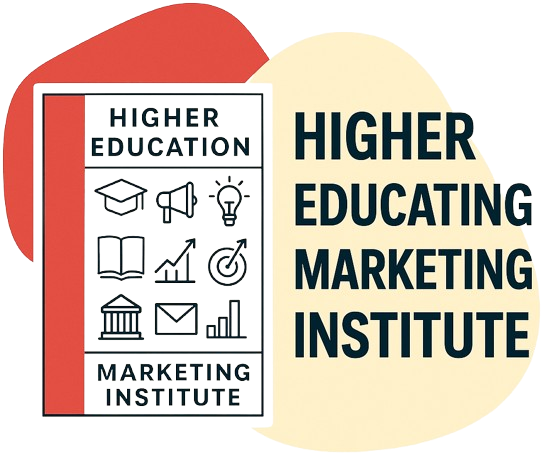Carnegie has released a set of Higher Education SEO Benchmarks for 2024.
The data is a review of their own clients, so may not be as comprehensive as an external survey.
It’s interesting, though, to see some of the areas where we might compare our own clients.
Given the niche, Higher Ed, and the channel, SEO, any data is good data.
Higher Ed SEO Benchmarks report
Higher Ed SEO Benchmarks Analysis by ChatGPT
SEO Benchmarks for Higher Ed: A Game-Changer or a Glorified Baseline?
Carnegie’s 2024 Higher Ed SEO Benchmarks Report dives into uncharted territory: providing actionable SEO metrics tailored specifically for colleges and universities. It’s a promising endeavor, but let’s unpack whether this report is truly as groundbreaking as it aims to be—or just another data dump wrapped in glossy branding.
Strengths: The Good Stuff
1. Finally, Some Baselines
With industry-wide organic search KPIs absent until now, this report delivers overdue metrics. Carnegie defines benchmarks like a 2.7% click-through rate (CTR) and highlights the disparity between branded (56%) and non-branded (43%) organic traffic. These are essential starting points for higher ed marketers lost in the SEO wilderness.
2. Non-Branded Keywords as Gold Mines
Non-branded queries dominate impressions (87%) but lag in clicks (43%). The takeaway? Colleges need to up their game in creating content that captures broader audiences earlier in their decision-making journeys.
3. Organic Search Dominance
Organic traffic accounts for 46% of visits to higher ed websites, outperforming all other channels. This underscores the importance of SEO as a cornerstone of digital strategy.
4. Engagement Metrics Shine
Organic users are the MVPs of engagement, with a whopping 61% engagement rate. Translation: These users aren’t just window shopping—they’re your real prospects.
Weaknesses: The Missed Opportunities
1. Limited Scope on AI Impact
The report acknowledges AI features like Google’s Search Generative Experience but admits its benchmarks don’t account for these changes. Given AI’s increasing influence on search, this feels like a glaring omission.
2. Data Overload, Action Light
While the report is dense with metrics, it falls short in bridging data to action. Sure, it identifies underperforming pages (hello, 25th percentile CTRs), but the “what next?” for marketers isn’t as fleshed out as it could be.
3. Overemphasis on CTR Benchmarks
While CTR is important, treating it as the holy grail risks oversimplifying SEO’s multi-faceted nature. What about content quality, UX, or broader brand-building implications?
Takeaways: What Marketers Can Actually Use
• Focus on Non-Branded Keywords
This is your growth lever. Carnegie urges targeting broad, non-branded queries to expand visibility. Their advice? Study top competitors, refine your keywords, and out-create them.
• CTR ≠ Success Alone
Pages with stellar CTRs might skew toward branded keywords. To avoid stagnation, mix in non-branded strategies to attract new audiences.
• Engage, Then Convert
Engaged sessions correlate with actions like applications and visit scheduling. Craft content that informs and delights to nurture these high-value visitors.
Non-Obvious Findings: The Nuggets
1. Position 11-39 = Untapped Potential
Pages ranking here see decent CTRs, hinting at opportunities to optimize without needing to hit the coveted top 10.
2. Branded ≠ Guaranteed Loyalty
Students searching branded terms click more (56% CTR), but these audiences are already warm leads. The real battle? Winning over the non-branded crowd who’ve yet to choose you.
3. CTR Benchmarks Are Just a Baseline
Pages exceeding 2.7% CTR often rely heavily on branded traffic. Carnegie warns against resting on these laurels—diversify your SEO strategy.
Final Thoughts: Worth Your Time?
Carnegie’s report is a win for higher ed marketers desperate for context, but it’s not a silver bullet. The data is useful, but applying it will take effort—and an eye toward where SEO is headed (hello, AI-dominated search results).
This report is best suited for higher ed marketing teams ready to dissect, adapt, and go beyond the surface-level takeaways. If that’s you, dig in. If not, well, enjoy your 2.7% CTR and hope it doesn’t drop next year.
The TL;DR of The Higher Ed SEO Benchmarks 2024 Study
TL;DR: Carnegie’s 2024 SEO Benchmarks Report delivers overdue metrics tailored to higher ed, like a 2.7% CTR benchmark and insights into branded vs. non-branded traffic. Organic search drives 46% of website visits and boasts the highest engagement (61%), but the report’s takeaways on AI’s impact feel lacking. Actionable tips include focusing on non-branded keywords for growth and optimizing mid-tier ranking pages (positions 11-39). Great baseline data, but you’ll need to connect the dots to truly capitalize on it. Don’t just aim for CTR—aim for strategy.
Higher Ed SEO Benchmarks Analysis by ChatGPT Prompt
Interested in the prompt I used? Here it is:
Imagine you are a journalist working in the space of higher education marketing. You write for the Higher Education Marketing Institute.Your tone is matter-of-fact, brief, and a little bit snarky. You use short sentances, and call out to the reader as if in conversation.
Please review this presentation and write the article you would produce for your a thorough synopsis including strengths, weaknesses, valuable takeaways and non-obvious findings.
Hopefully you found this useful. For me, one of the best uses of ChatGPT is analysis like this. Humans are inherently lazy creatures and the TL;DR is often all we can handle.




